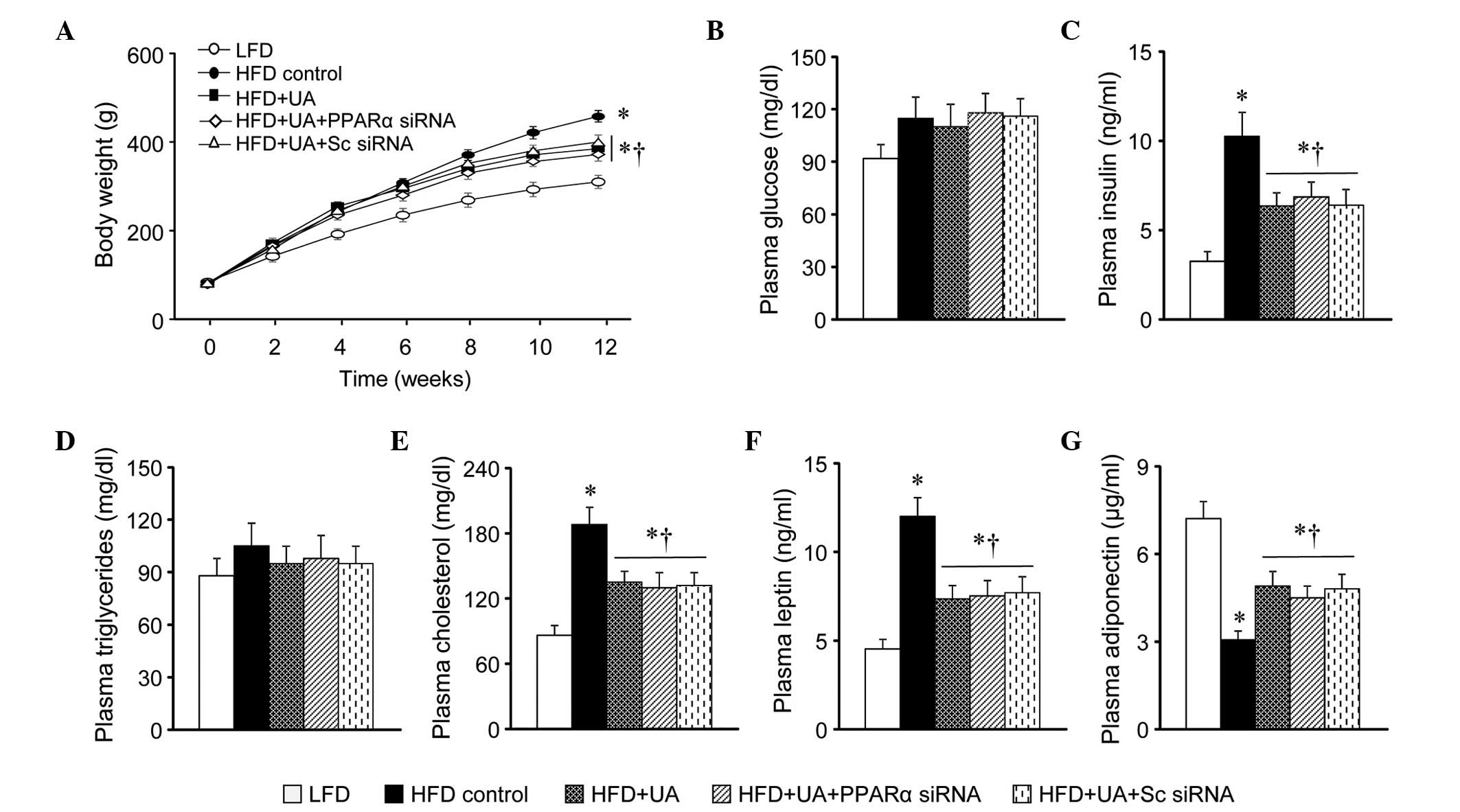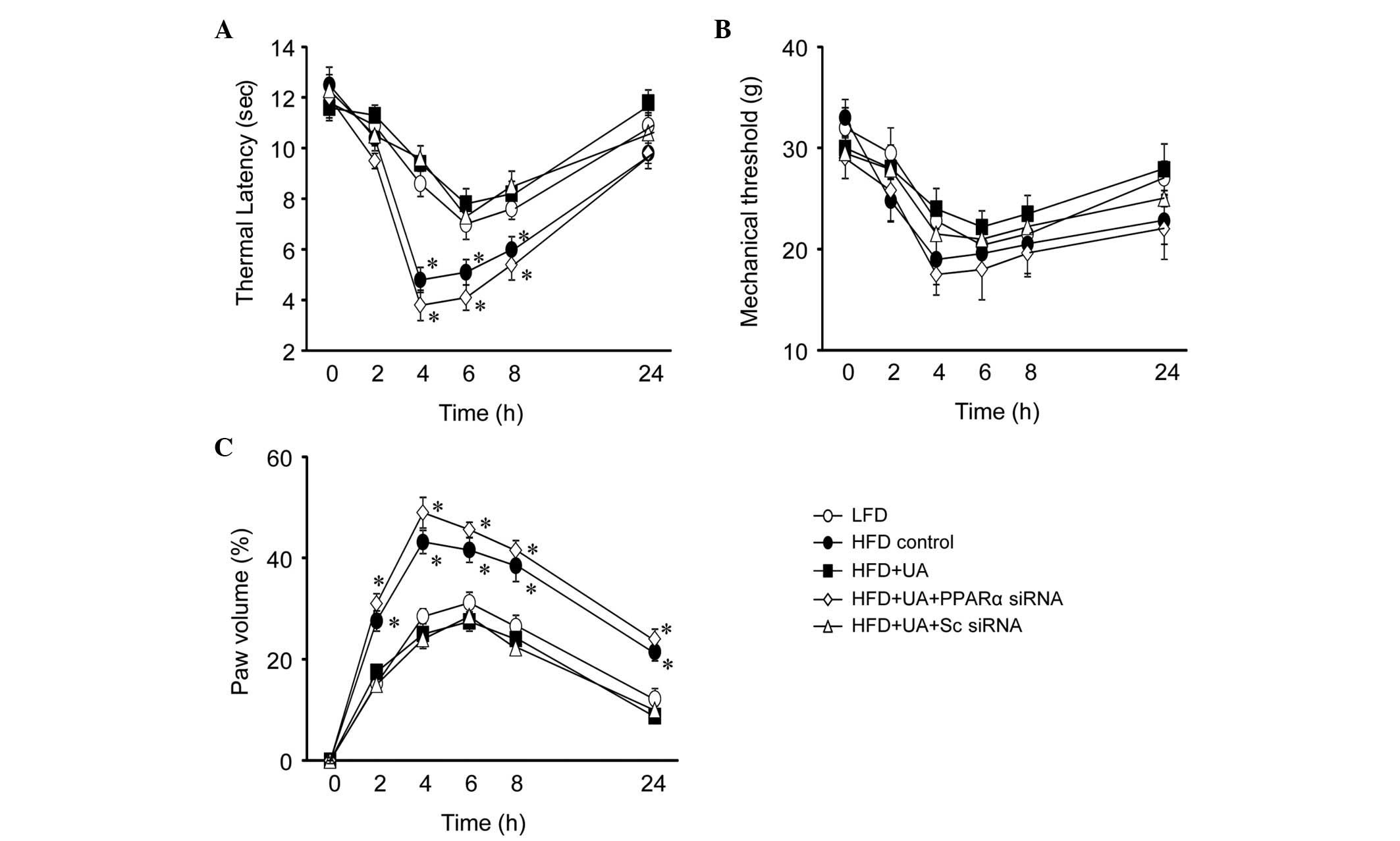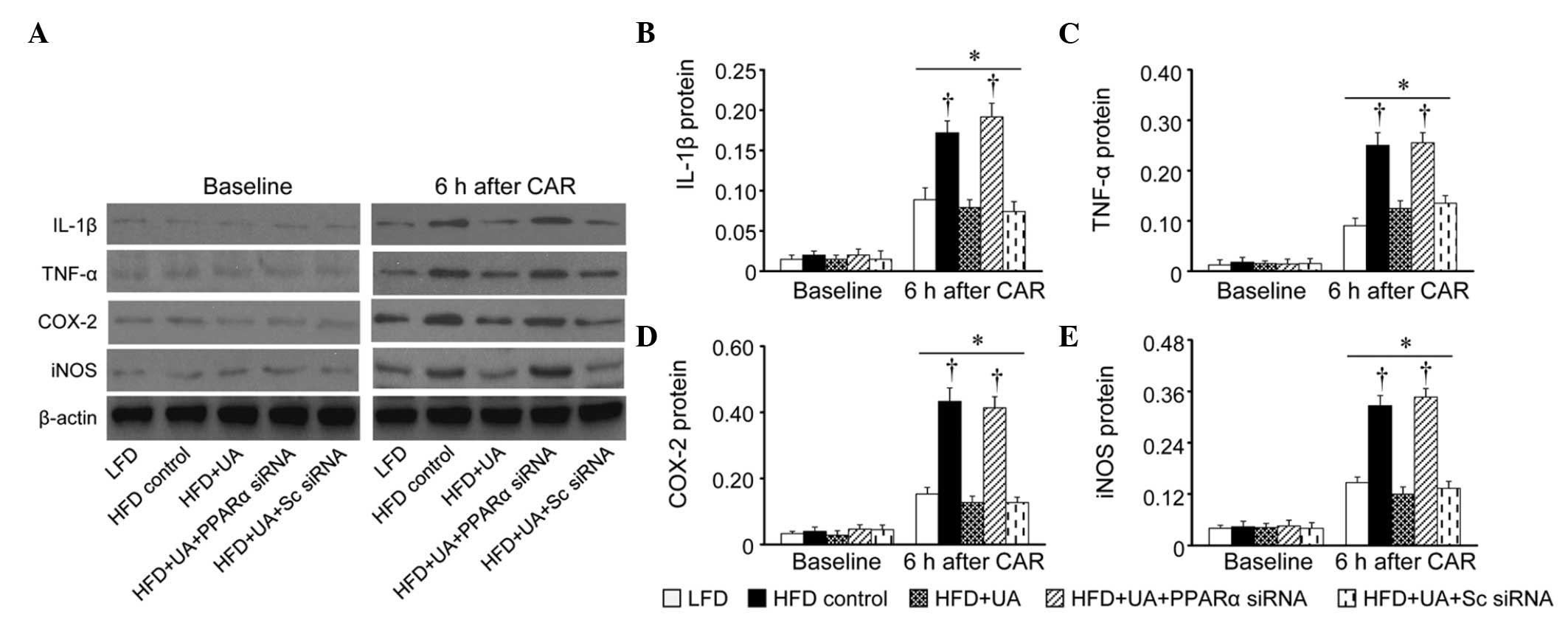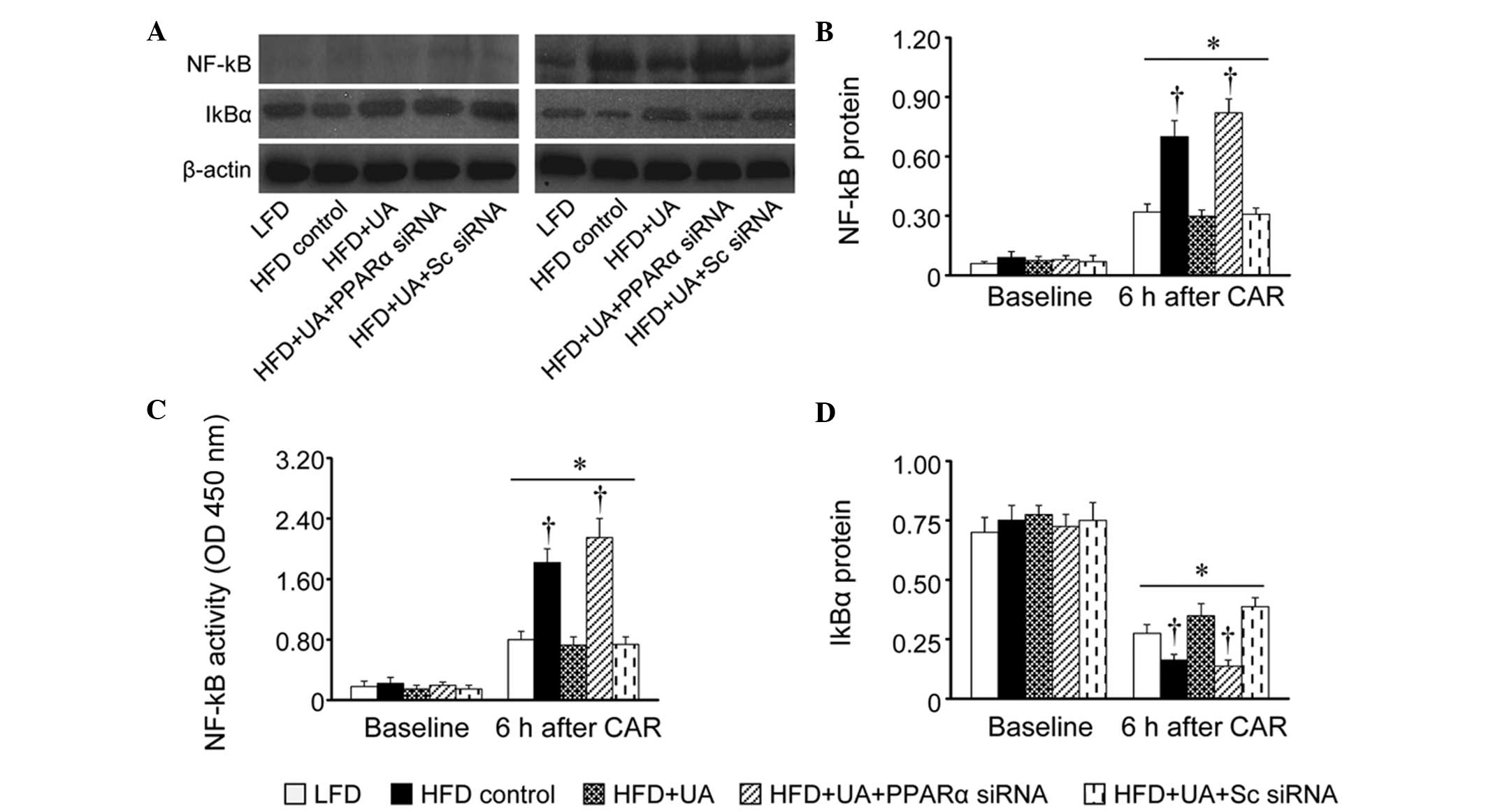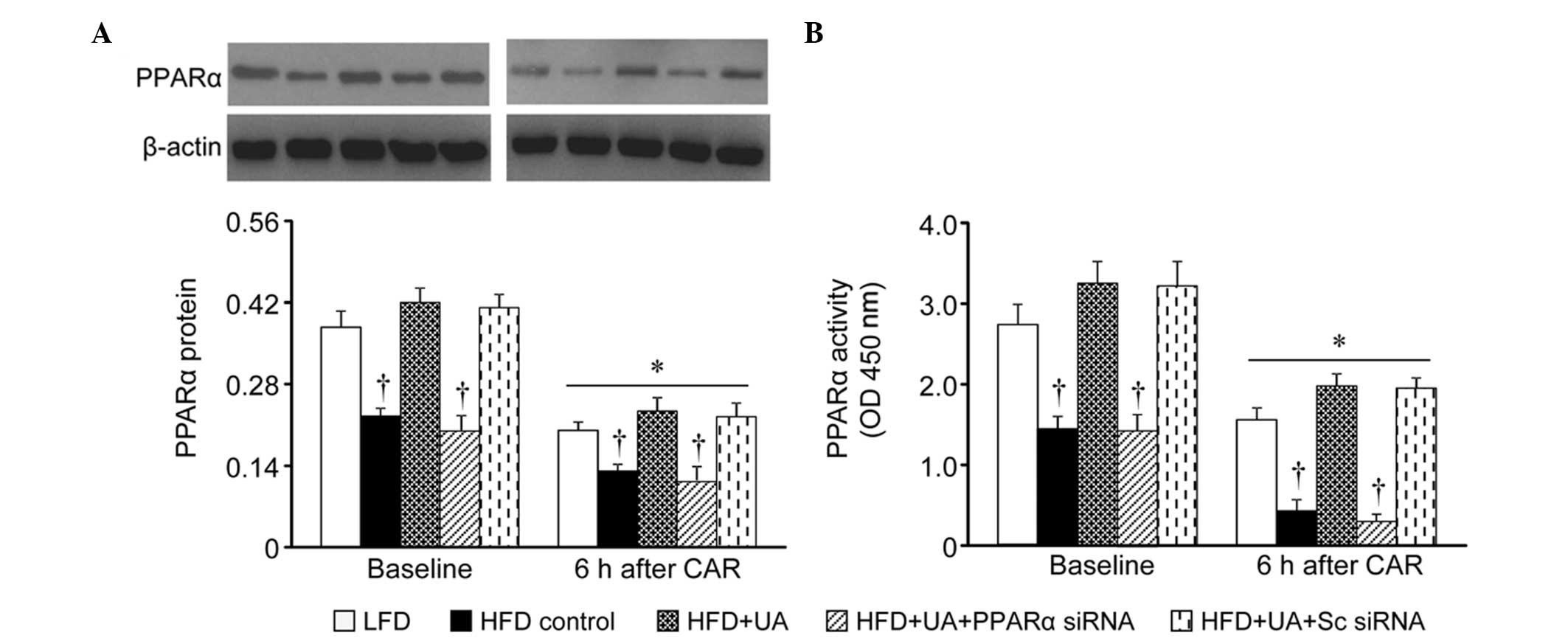|
1
|
Prentice AM: The emerging epidemic of
obesity in developing countries. Int J Epidemiol. 35:93–99. 2006.
View Article : Google Scholar
|
|
2
|
Hurt RT, Kulisek C, Buchanan LA and
McClave SA: The obesity epidemic: Challenges, health initiatives,
and implications for gastroenterologists. Gastroenterol Hepatol
(NY). 6:780–792. 2010.
|
|
3
|
Jankun J, Al-Senaidy A and
Skrzypczak-Jankun E: Can inactivators of plasminogen activator
inhibitor alleviate the burden of obesity and diabetes? (Review)
Int J Mol Med. 29:3–11. 2012.
|
|
4
|
Marcus DA: Obesity and the impact of
chronic pain. Clin J Pain. 20:186–191. 2004. View Article : Google Scholar : PubMed/NCBI
|
|
5
|
Hitt HC, McMillen RC, Thornton-Neaves T,
Koch K and Cosby AG: Comorbidity of obesity and pain in a general
population: Results from the southern pain prevalence study. J
Pain. 8:430–436. 2007. View Article : Google Scholar : PubMed/NCBI
|
|
6
|
D'Arcy Y: Managing pain in obese patients.
Nurse Pract. 36:28–32; quiz 33. 2011. View Article : Google Scholar : PubMed/NCBI
|
|
7
|
Patterson RE, Frank LL, Kristal AR and
White E: A comprehensive examination of health conditions
associated with obesity in older adults. Am J Prev Med. 27:385–390.
2004. View Article : Google Scholar : PubMed/NCBI
|
|
8
|
Roane DS and Porter JR: Nociception and
opioid-induced analgesia in lean (Fa/-) and obese (fa/fa) Zucker
rats. Physiol Behav. 38:215–218. 1986. View Article : Google Scholar : PubMed/NCBI
|
|
9
|
Croci T and Zarini E: Effect of the
cannabinoid CB1 receptor antagonist rimonabant on nociceptive
responses and adjuvant-induced arthritis in obese and lean rats. Br
J Pharmacol. 150:559–566. 2007. View Article : Google Scholar : PubMed/NCBI
|
|
10
|
Iannitti T, Graham A and Dolan S:
Increased central and peripheral inflammation and inflammatory
hyperalgesia in Zucker rat model of leptin receptor deficiency and
genetic obesity. Exp Physiol. 97:1236–1245. 2012. View Article : Google Scholar : PubMed/NCBI
|
|
11
|
D'Agostino G, La Rana G, Russo R, Sasso O,
Iacono A, Esposito E, Raso GM, Cuzzocrea S, Lo Verme J, Piomelli D,
et al: Acute intracerebroventricular administration of
palmitoylethanolamide, an endogenous peroxisome
proliferator-activated receptor-alpha agonist, modulates
carrageenan-induced paw edema in mice. J Pharmacol Exp Ther.
322:1137–1143. 2007. View Article : Google Scholar : PubMed/NCBI
|
|
12
|
Wang J, Zhang Q, Zhao L, Li D, Fu Z and
Liang L: Down-regulation of PPARα in the spinal cord contributes to
augmented peripheral inflammation and inflammatory hyperalgesia in
diet-induced obese rats. Neuroscience. 278:165–178. 2014.
View Article : Google Scholar : PubMed/NCBI
|
|
13
|
Jia Y, Bhuiyan MJ, Jun HJ, Lee JH, Hoang
MH, Lee HJ, Kim N, Lee D, Hwang KY, Hwang BY, et al: Ursolic acid
is a PPAR-α agonist that regulates hepatic lipid metabolism. Bioorg
Med Chem Lett. 21:5876–5880. 2011. View Article : Google Scholar : PubMed/NCBI
|
|
14
|
Li S, Liao X, Meng F, Wang Y, Sun Z, Guo
F, Li X, Meng M, Li Y and Sun C: Therapeutic role of ursolic acid
on ameliorating hepatic steatosis and improving metabolic disorders
in high-fat diet-induced non-alcoholic fatty liver disease rats.
PLoS One. 9:e867242014. View Article : Google Scholar : PubMed/NCBI
|
|
15
|
Liu J: Pharmacology of oleanolic acid and
ursolic acid. J Ethnopharmacol. 49:57–68. 1995. View Article : Google Scholar : PubMed/NCBI
|
|
16
|
Ikeda Y, Murakami A and Ohigashi H:
Ursolic acid: An anti- and pro-inflammatory triterpenoid. Mol Nutr
Food Res. 52:26–42. 2008. View Article : Google Scholar : PubMed/NCBI
|
|
17
|
Kim M, Sung B, Kang YJ, Kim DH, Lee Y,
Hwang SY, Yoon JH, Yoo MA, Kim CM, Chung HY and Kim ND: The
combination of ursolic acid and leucine potentiates the
differentiation of C2C12 murine myoblasts through the mTOR
signaling pathway. Int J Mol Med. 35:755–762. 2015.
|
|
18
|
Vasconcelos MA, Royo VA, Ferreira DS,
Crotti AE, Andrade e Silva ML, Carvalho JC, Bastos JK and Cunha WR:
In vivo analgesic and anti-inflammatory activities of ursolic acid
and oleanoic acid from Miconia albicans (Melastomataceae). Z
Naturforsch C. 61:477–482. 2006. View Article : Google Scholar : PubMed/NCBI
|
|
19
|
Zhou Y, Li JS, Zhang X, Wu YJ, Huang K and
Zheng L: Ursolic acid inhibits early lesions of diabetic
nephropathy. Int J Mol Med. 26:565–570. 2010.PubMed/NCBI
|
|
20
|
Tsai SJ and Yin MC: Antioxidative and
anti-inflammatory protection of oleanolic acid and ursolic acid in
PC12 cells. J Food Sci. 73:H174–H178. 2008. View Article : Google Scholar : PubMed/NCBI
|
|
21
|
Martin R, Carvalho-Tavares J, Hernández M,
Arnés M, Ruiz-Gutierrez V and Nieto ML: Beneficial actions of
oleanolic acid in an experimental model of multiple sclerosis: A
potential therapeutic role. Biochem Pharmacol. 79:198–208. 2010.
View Article : Google Scholar
|
|
22
|
Madsen AN, Hansen G, Paulsen SJ,
Lykkegaard K, Tang-Christensen M, Hansen HS, Levin BE, Larsen PJ,
Knudsen LB, Fosgerau K and Vrang N: Long-term characterization of
the diet-induced obese and diet-resistant rat model: A polygenetic
rat model mimicking the human obesity syndrome. J Endocrinol.
206:287–296. 2010. View Article : Google Scholar : PubMed/NCBI
|
|
23
|
D'Agostino G, La Rana G, Russo R, Sasso O,
Iacono A, Esposito E, Mattace Raso G, Cuzzocrea S, Loverme J,
Piomelli D, et al: Central administration of palmitoylethanolamide
reduces hyper-algesia in mice via inhibition of NF-kappaB nuclear
signalling in dorsal root ganglia. Eur J Pharmacol. 613:54–59.
2009. View Article : Google Scholar : PubMed/NCBI
|
|
24
|
Ichitani Y, Shi T, Haeggstrom JZ,
Samuelsson B and Hökfelt T: Increased levels of cyclooxygenase-2
mRNA in the rat spinal cord after peripheral inflammation: An in
situ hybridization study. Neuroreport. 8:2949–2952. 1997.
View Article : Google Scholar : PubMed/NCBI
|
|
25
|
Samad T and Abdi S: Cyclooxygenase-2 and
antagonists in pain management. Curr Opin Anaesthesiol. 14:527–532.
2001. View Article : Google Scholar
|
|
26
|
Kota BP, Huang TH and Roufogalis BD: An
overview on biological mechanisms of PPARs. Pharmacol Res.
51:85–94. 2005. View Article : Google Scholar : PubMed/NCBI
|
|
27
|
Moreno S, Farioli-Vecchioli S and Cerù MP:
Immunolocalization of peroxisome proliferator-activated receptors
and retinoid X receptors in the adult rat CNS. Neuroscience.
123:131–145. 2004. View Article : Google Scholar
|
|
28
|
Berger J and Moller DE: The mechanisms of
action of PPARs. Annu Rev Med. 53:409–435. 2002. View Article : Google Scholar : PubMed/NCBI
|
|
29
|
Filip-Ciubotaru F, Foia L, Manciuc C and
Grigore C: PPARs: Structure, mechanisms of action and control. Note
I. Rev Med Chir Soc Med Nat Iasi. 115:477–484. 2011.In Romanian.
PubMed/NCBI
|
|
30
|
Duval C, Fruchart JC and Staels B: PPAR
alpha, fibrates, lipid metabolism and inflammation. Arch Mal Coeur
Vaiss. 97:665–672. 2004.PubMed/NCBI
|
|
31
|
Cuzzocrea S, Mazzon E, Di Paola R, Peli A,
Bonato A, Britti D, Genovese T, Muià C, Crisafulli C and Caputi AP:
The role of the peroxisome proliferator-activated receptor-alpha
(PPAR-alpha) in the regulation of acute inflammation. J Leukoc
Biol. 79:999–1010. 2006. View Article : Google Scholar : PubMed/NCBI
|
|
32
|
Auphan N, DiDonato JA, Rosette C, Helmberg
A and Karin M: Immunosuppression by glucocorticoids: Inhibition of
NF-kappa B activity through induction of I kappa B synthesis.
Science. 270:286–290. 1995. View Article : Google Scholar : PubMed/NCBI
|
|
33
|
George A, Marziniak M, Schäfers M, Toyka
KV and Sommer C: Thalidomide treatment in chronic constrictive
neuropathy decreases endoneurial tumor necrosis factor-alpha,
increases interleukin-10 and has long-term effects on spinal cord
dorsal horn met-enkephalin. Pain. 88:267–275. 2000. View Article : Google Scholar : PubMed/NCBI
|
|
34
|
Zhao W, Iskandar S, Kooshki M, Sharpe JG,
Payne V and Robbins ME: Knocking out peroxisome
proliferator-activated receptor (PPAR) alpha inhibits
radiation-induced apoptosis in the mouse kidney through activation
of NF-kappaB and increased expression of IAPs. Radiat Res.
167:581–591. 2007. View
Article : Google Scholar : PubMed/NCBI
|
|
35
|
Vanden Berghe W, Vermeulen L, Delerive P,
De Bosscher K, Staels B and Haegeman G: A paradigm for gene
regulation: Inflammation, NF-kappaB and PPAR. Adv Exp Med Biol.
544:181–196. 2003. View Article : Google Scholar
|
|
36
|
Lu J, Wu DM, Zheng YL, Hu B, Zhang ZF, Ye
Q, Liu CM, Shan Q and Wang YJ: Ursolic acid attenuates
D-galactose-induced inflammatory response in mouse prefrontal
cortex through inhibiting AGEs/RAGE/NF-κB pathway activation. Cereb
Cortex. 20:2540–2548. 2010. View Article : Google Scholar : PubMed/NCBI
|















